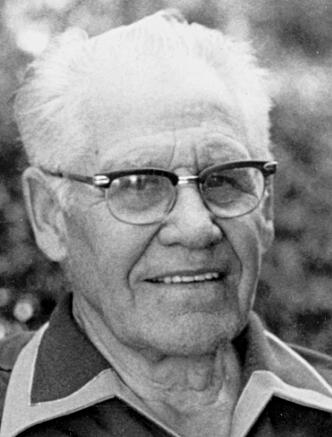 Casper Oimoen
Casper Oimoen
Scandinavian-American Hall of Fame
1984 inductee
Casper Oimoen was born in Norway on May 8, 1906, and came to Minot, ND, in 1923 to live with an uncle, O.P. Nustad. He learned to ski as a boy in Norway and took part in his first ski jumping tournament when he was 10 years old.
He began his skiing career in the United States by entering the Junior National Jumping Championship in Canton, SD, where he jumped 48 feet farther than his nearest competitor. In the Senior Class A National Championship, he received a prize for “the most graceful and longest standing jump.”
Because he had to wait five years to acquire U.S. citizenship, he couldn’t qualify for the Olympics until 1928. In addition to skiing, he worked with mortar and brick and was part of the crew that built the North Dakota State Capitol at Bismarck. Only he and one other man worked from the swing scaffold to point up the stone on the outside of the building.
Casper Oimoen received more than 400 trophies in less than 15 years, giving him the reputation of being “North Dakota’s greatest athlete.” Oimoen’s record of skiing feats led to his being captain of the United States Olympic Ski Team in 1932 and again in 1936.
The former Minoter was honored during the 1982 Høstfest as the subject for that year’s collector’s medal with the coin front picturing Oimoen.
Oimoen was inducted into the United States Skiing Hall of Fame in 1963. His list of accomplishments included winning the United States National Ski Jumping Championship three successive times, winning the Northwest Ski Jumping Championship six times in a row, and winning the Central United States Championship every year from 1925 to 1931. In 1930 he won the Eastern, Central and National Championships plus taking first in eight other events, a feat which has never been equaled.
He made national headlines as “Boy Wonder” and was asked by New York Times news writer Frank Elkin why he didn’t lose once in awhile so Elkin “could change his copy.”
He also won the Mayor Cermac trophy at the World’s Fair Tournament in Chicago. The highlight of his skiing career was at the Olympics in 1936 at Hamburg, Germany, where judges and the public proclaimed him as “the most spectacular, graceful and skilled skier on the American continent with a record that has never been equaled and probably never will be excelled.”
In 1935 Oimoen, known for his daredevil jumps, took the longest jump of his life, setting a new American record of 225 feet. That same year he and three others jumped together in formation, clearing a distance of more than 200 feet. Later in Montana he broke his leg and never competed again.
In 1973 Oimoen was the honorary chairman of the Minot Winterfest. He also received the Theodore Roosevelt Roughrider Award that year.
He lived in Minot from 1923 to 1935, then moved to Anaconda, MT. He returned to Minot 10 years later, living here until moving to Ashland, OR, in the 1960s.
He is married to the former Ruth Edwards of Velva. In 1979 they celebrated their 50th wedding anniversary with a trip to Norway. While there, Oimoen learned the story behind a flag painted on the mountain side at Trondhjem.
His parents, Dorothea and Aslak Oimoen, were married in 1897 and spent their wedding night in an inn that looked out on the mountain side. Their bridal party painted the flag on the terrain to give the couple something to look at in the morning. They hung by ropes to do the job, which was considered a treasonous act because Norway was under the rule of Sweden at the time and display of the Norwegian flag was not allowed. No one ever learned who had actually painted the flag, but after Norway gained its independence in 1905, local people renewed the painting and have every year since then.
Oimoen and his wife had two daughters. Delores was born in 1932 and died in 1953. Their daughter, Sonja, also lives in Ashland. They have three grandchildren. A bronze statue of Oimoen stands in the Scandinavian Heritage Park in Minot, ND.


 Casper Oimoen
Casper Oimoen